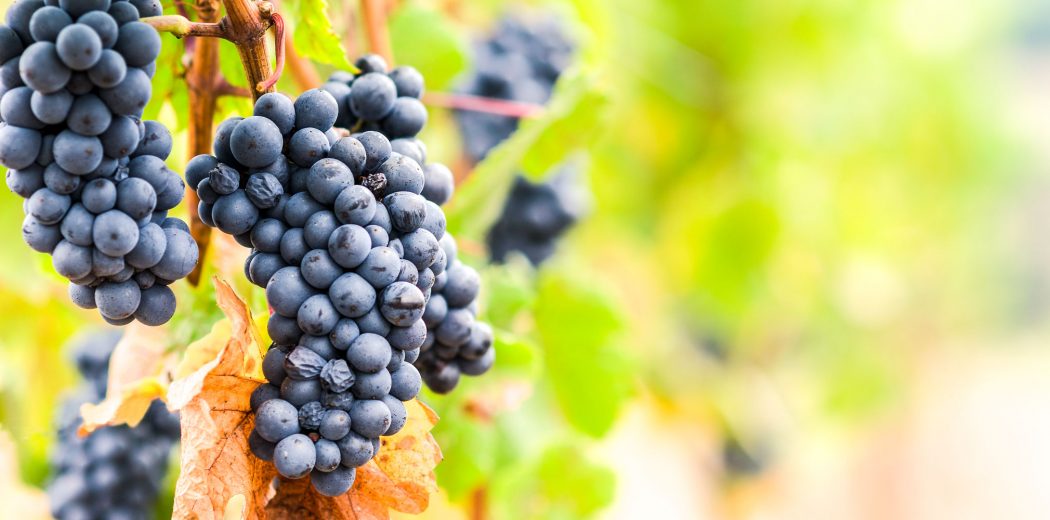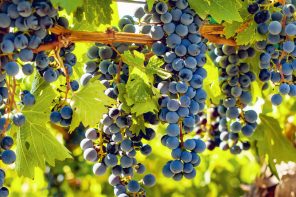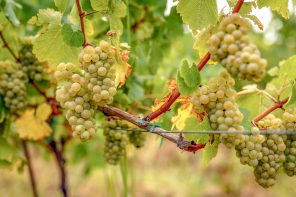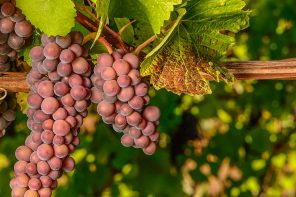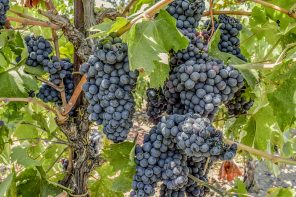Who’s the noblest, most-sought-after (albeit, finicky) grape of them all? That’s right — no other than Pinot Noir. Celebrated for centuries — and made even more popular by Paul Giamatti’s neurotic, wine-loving character in the film, “Sideways” — Pinot Noir has been championing the hearts (and wine glasses) of oenophiles for quite some time. This versatile variety is used to produce wines all over the world, both sparkling and dry, finding its roots in just about every wine producing region out there. Here’s what makes the grape so special.
The name Pinot Noir actually comes from the French words ‘black’ and ‘pine’— a reference to the shape in which the tight grape clusters grow. Although planted throughout the world, Pinot Noir tends to thrive in cooler climates. The grape’s true home is Burgundy’s famed Cote d’Or, where it’s used to produce high-quality, varietal wines — some of which garner some of the market’s highest prices. Pinot Gris and Pinot Blanc are both popular mutations of Pinot Noir; in the early 20th century, Pinot Noir was crossed with Cinsault to create Pinotage — South Africa’s signature red grape variety.
Pinot Noir based wines tend to fetch some of the market’s higher prices because the grape is pretty difficult to grow. The fruit grows in tight clusters, making the grapes susceptible to disease and rot. Pinot Noir also has naturally thin skins, which also leave the grapes vulnerable to damage. However, it’s the thin skins that also make Pinot Noir based wines so remarkable. The thin skins make for lightly colored wines with a low-medium body and low tannin levels. The grape is also one of the most terroir-reflective varieties in the world, and when tended carefully and properly, the final wines will give way to a serious sense of place.
Pinot Noir is a grape that can do it all. Aside from producing high-quality, distinct still reds, the grape is also used in sparkling wine production — specifically in Champagne and Franciacorta. Pinot Noir is rarely vinified without skin contact, though when implemented, will give way to unique white wines. The grape is also used for rosé production worldwide. In cooler climates, which Pinot Noir tends to prefer, the wines are earth-driven and bright, with notes of red fruit, mushroom, and vegetal cherry flavors. In warmer climates, the wines tend to be jammier and juicy, with darker fruit flavors and less pronounced acidity.
Serious Pinot — whether vinified, still, or sparkling — can have a seriously long lifetime, thanks to its pronounced acidity and precise structure. Various bottles from around the world, though notably,Champagne and Burgundy, have been known to last for decades, withstanding the test of time and developing into even more complex, layered wines than when originally bottled.
Pinot Noir’s red fruit flavors and earthy undertones make the wine a no-brainer for equally earth-driven food flavors, specifically mushrooms, lentils and game. The wine’s naturally low alcohol content (generally around 12 percent) makes the bottles pretty easy to drink, whether with or without food. When served with a slight chill, the wine truly comes to life. Santé!

